|

Before there were motorized vehicles, forest fires were able to burn almost
unchecked.
Citizens and firefighters would use hand held water extinguishers, rakes,
brooms, and other
hand tools to create fire breaks and stop fires. Horse drawn wagons could
carry a number of
extinguishers but were slow and unable to go off main roads.
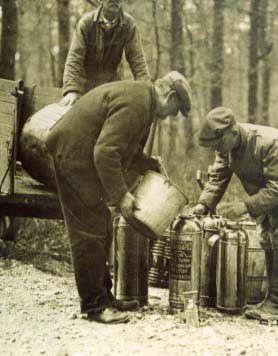
Refilling hand held water extinguishers.
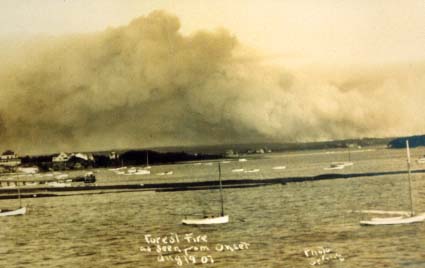
August 1907 photo from Onset bay of a Cape Cod
forest fire.
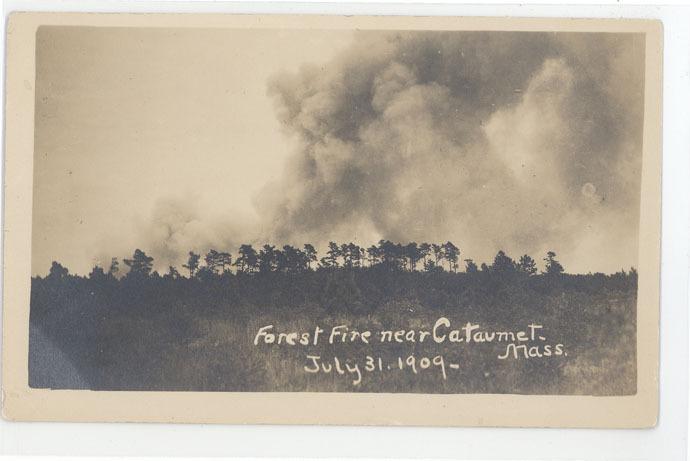
|
SOME
CAPE COD FOREST FIRE HISTORY |
|
In 1780, an early morning lightning storm started a fire in the woods. Clouds of
dark smoke filled the sky to the west of Sandwich in what was called
"The Dark Day." It had been for generations, the practice to "fire the
woods"
each year as the Indians had done, usually in April, to burn off the grass and
In 1887, a huge forest fire burned over 25,000 acres from the Pocasset
section of Bourne to Sandwich. This fire destroyed approximately 600
cord of stacked wood at the Sandwich Glass Company as well as several
stands of oak and pine ready for cutting. The Glass company was forced
to then purchase and burn coal in its furnaces at a substantial financial
cost. This, along with a labor union strike, ultimately contributed to the On May 30,1923 a fire began in the woods in Pocasset village. By the end of the day, it was thought that the fire was out. By morning however, it picked up again, burning through the day. Once again, it was believed that it was under control by nightfall, only to flare up again and again for 7 days. An area of approximately 25,000 acres, between Pocasset village, Sagamore, Sandwich, East Sandwich, and South Sandwich was left blackened. The State Commissioner of Conservation stated that "something was radically wrong" adding that the fire could have been contained to about 1,000 acres if it had been properly handled since it was not even a "fire day." Following this fire, the state purchased hundreds of acres of burned over forest in Bourne and Sandwich and created the Shawme State Forest in 1923. The name was changed in 1938 to the Shawme-Crowell State Forest, honoring Lincoln Crowell for his long dedication to the Cape's forests. Crowell was killed in 1938 when the patrol truck he was in was struck by a train in Brewster.
"A concerted national fire prevention program (dealing with wildland fires) did
not follow,
until two experiments in 1928.... The Cape Cod Forest Fire Prevention experiment
and the Forest fires can be extremely dangerous, especially when fought by hand. One of the worst fires ever on Cape Cod struck on April 27, 1938. A number of fires were burning on the Cape and in Plymouth County, when another fire began in Sandwich Bourne Deputy Chief Gibbs took a crew of young men, volunteers, with him in to fight the fire west of what is now Route 130 in Sandwich. 40 mile per hour winds fanned the flames and the men were soon trapped by the fire. All received serious burns. Three men, Thomas Adams, age 43; Gordon King, age 34, and Ervin Draber, age 28 died that day fighting this forest fire. A memorial stands today near the site where they died.
|
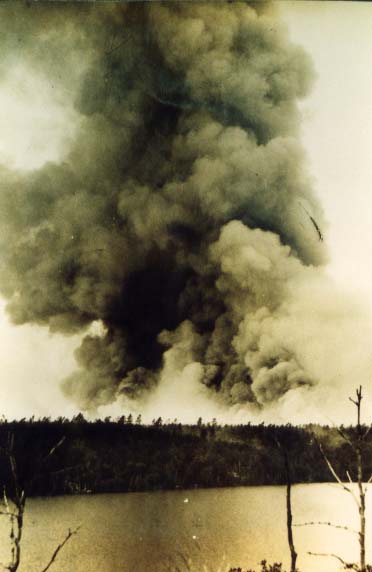
The brush and
forest fire problem on Cape Cod and in the southeastern part of
Massachusetts was severe, particularly in the spring. Thousands
of acres of forest
were burned yearly. The 1920's and 1930's saw many major fires
which led to the need for
a better way of fighting them. As trucks became available and
reliable, the
concept of the brush breaker was born.
![]()
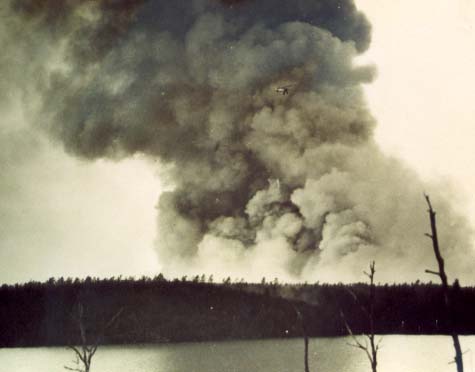
A bi-plane can
be seen against the plume of smoke at this Cape forest fire.
The plane may have been observing conditions from above.
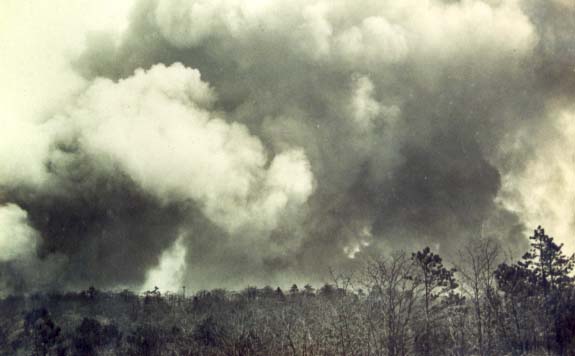
The 1920's
brought attention to the forest fire problem at the state level.
Research into ways to prevent and combat fires, included manned
fire patrol trucks,
fire roads, and fire prevention measures.
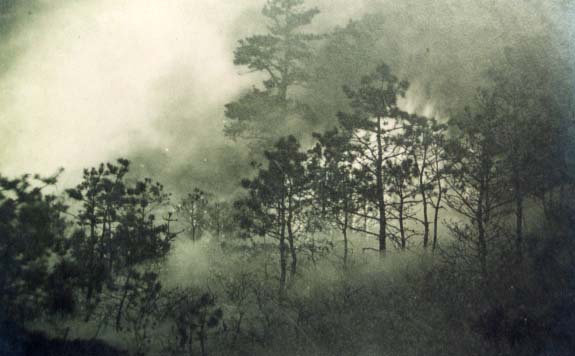
Pine forests in
the spring are explosive fuel.
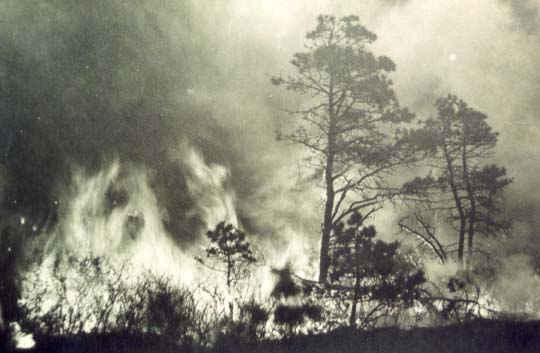
As fires
increase in size, the length of the side (flank) fire increases.
A sudden change in wind
speed or direction can turn low burning side fire into a
dangerous crowning headfire

Pine trees can
explode as a headfire rages through the forest, up hills and
across valleys.

Without a way to
get to these fires while they are still small, fires would grow
to thousands of
acres in a short time. Fires of huge magnitude are not
extinguishable... the just run out of
fuel or go out as weather conditions determine.

Fires threaten power lines, homes, barns, and
local villages. It was not unusual for fires to burns for days,
from one side of the Cape to the other.

The invention of the brush breaker enabled men
to quickly reach fires, either by fire access roads, or by
driving
cross country through brush and forested land as necessary to
reach and attack fires with water carried on the
brush breaker. Teams of brush breakers working together could
quickly surround and extinguish many fires
before the grew large.
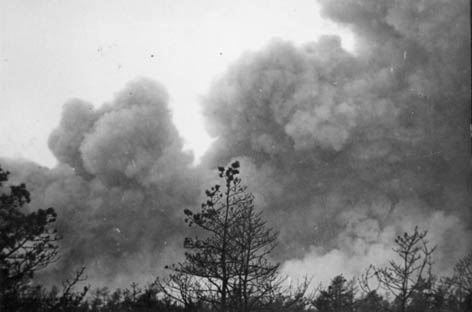
Fast moving fires were very dangerous.
![]()
FIREFIGHTERS MEMORIAL
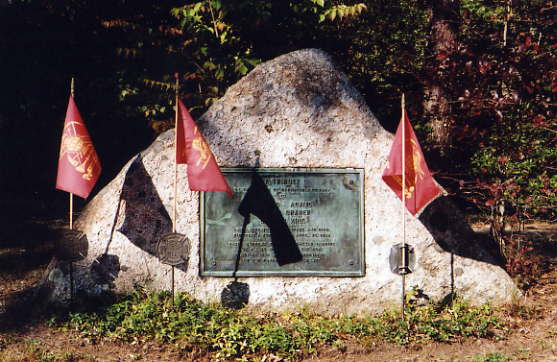
One of the
Cape's worst fires ever occurred on April 27, 1938 in the Town of
Sandwich.
A fire which started in the national guard camp at what would
become Otis, burned into
the Shawme Crowell State Forest. The 12 mile long by 5 mile wide
fire trapped and burned
several firemen. Three men, Thomas Adams, Ervin Draber, and Gordon King died from
burns.
Help came from several counties.
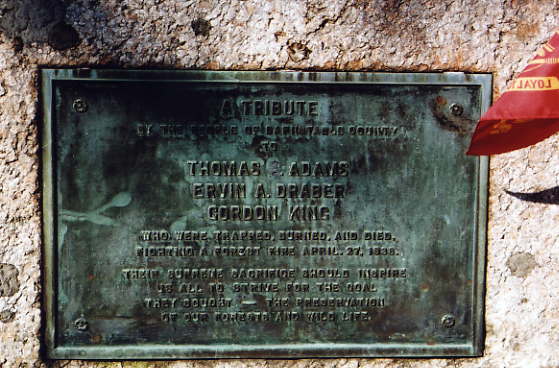
Memorial to Thomas Adams, Ervin A. Draber, and Gordon King.
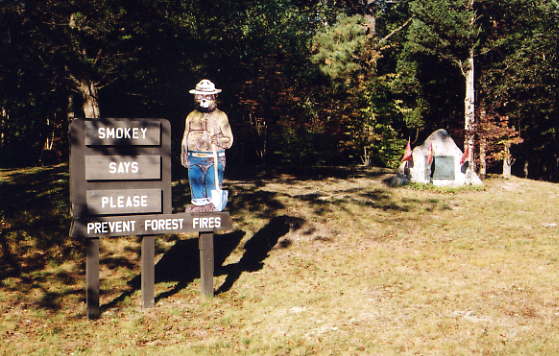
The memorial is locate on Route 130 in Forestdale.

Smokey Bear for fire prevention.
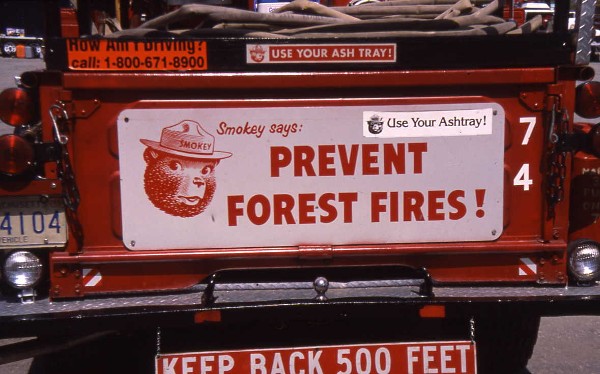
Preventing Forest Fires - Tailgate of DEM District 7 Patrol truck.

Only You!

Smokey
![]()
PLYMOUTH FIRES

This map is on the wall in the
District 2 headquarters at Myles Standish State Forest.
It shows some of the major fires that have burned in the Plymouth / Carver area.

|
Some of the fires
in the Plymouth History: |
| Some of this information provided
by John Hedge, Plymouth FD Captain (Retired) who had researched area
news reports about some of the great Plymouth fires.
The Great Fire of 1900 Spring 1937 May 8, 1957 May 15, 1971 1991 May 8, 1995 |
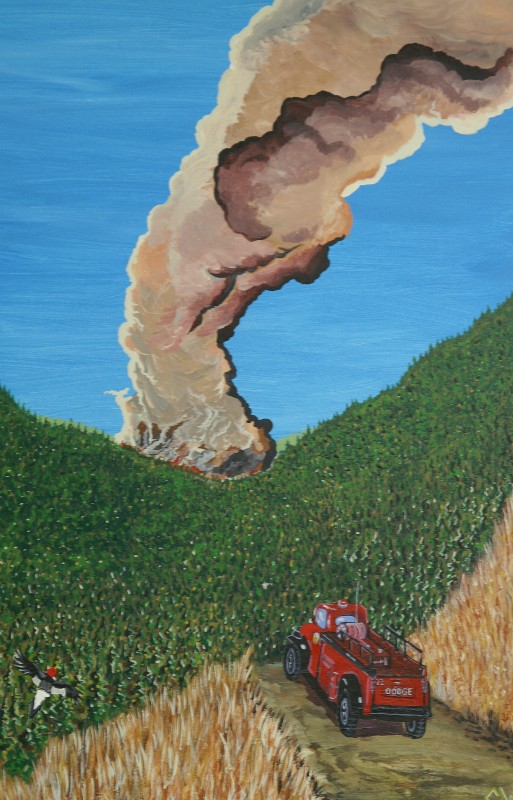
Painting in the Myles Standish
headquarters.
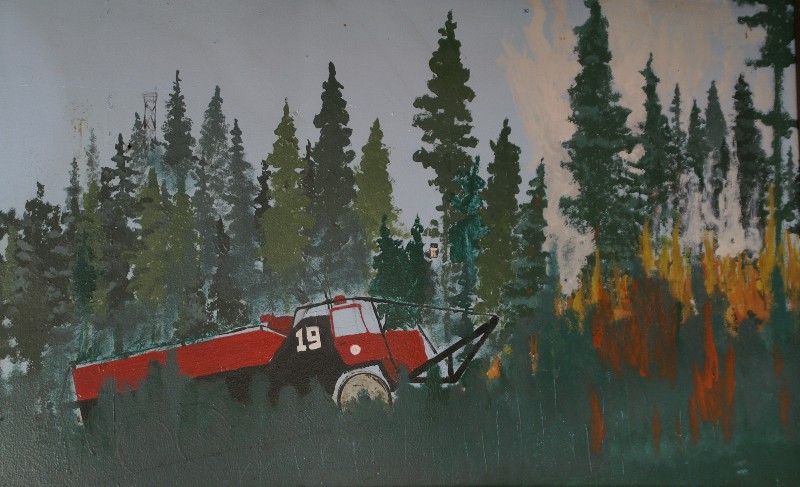
![]()
![]()
CAPE COD BRUSH BREAKERS
![]()
Related Links
Massachusetts DCR - Bureau of Forest
Fire Control
Forest Fire Lookout Association
History Early Fire Towers
Massachusetts Fire Tower Locations
CCFD.com - Plymouth Brush Breaker Drill April 2006
CCFD.com - Plymouth-Wareham Brush Fires May 2006
CCFD.com
- Sandwich Fire Tower 2006

NOTE
Photos in this series are from various sources
including fire department and personal collections.
(Top)